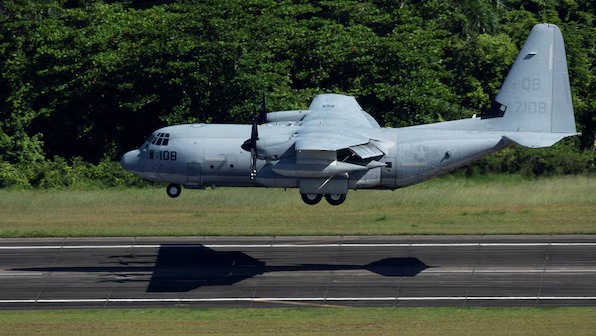US Military Drills in Bangladesh Spark Strategic Alarm in India: Geopolitical Tensions and Delhi’s Response in 2025
There is palpable alarm in New Delhi as the United States sharply expands its military activities in the name of US Military Drills in neighbouring Bangladesh, raising major strategic questions along the eastern flank of India.
US Military Drills Moves: What’s Happening in Bangladesh?
Over the past two months, the US has executed an unprecedented series of military deployments and joint exercises in Bangladesh, especially in and around Chittagong—a geostrategic port city close to India’s eastern border and Myanmar. Recent highlights include:

- A US Air Force C-130J Super Hercules transport aircraft landed at Chittagong’s Shah Amanat International Airport as part of Operation Pacific Angel 25-3, a multi-nation drill with air forces of Bangladesh, the US, and Sri Lanka.
- Prior drills like “Tiger Lightning-2025” and “Tiger Shark” have seen US and Bangladeshi paramilitary units practice counterterrorism, jungle warfare, and combat casualty care, with US weapons and 150 Bangladesh personnel training alongside nearly 100 Americans.
- US military teams—numbering up to 25—were reportedly stationed near strategic border areas like Cox’s Bazar, with Indian agencies concerned over possible covert movements into Myanmar.
- More joint exercises are already being planned, fueling the impression that Washington is deepening operational logistics and reconnaissance capabilities close to India’s Northeast.
Washington’s Motives: Humanitarian Response or Geopolitical Positioning?
Official US statements describe these activities as “routine exercises – US Military Drills” aimed at strengthening defence cooperation, humanitarian disaster readiness, and interoperability across the Indo-Pacific. But their timing—following the ouster of Bangladesh’s longtime PM Sheikh Hasina after violent protests and alleged US involvement—suggests a more complex strategic calculus.
The interim Bangladeshi government led by Muhammad Yunus is overtly pro-US. Some analysts claim Hasina was forced out for refusing American requests over control of St Martin’s Island, a crucial maritime hub near Myanmar. The confluence of these US military drills, recent regime change, and Washington’s deepening links to Bangladeshi and Myanmar opposition groups has raised suspicions about a US attempt to fashion a new security architecture in South Asia, potentially countering growing Chinese influence.
India’s Worry: Security, Diplomacy & Power Projection
India sees these developments as enormously consequential. Chittagong and Cox’s Bazar lie near sensitive Indian states (Tripura, Mizoram, Assam), areas already hit by border insurgencies and refugee crises. An expanded US presence could:
- Challenge India’s “natural sphere of influence” in Bangladesh and Myanmar.
- Increase instability, especially if US overtures to rebel groups in Myanmar translate into new arms transfers or intelligence support.
- Threaten key infrastructure like the Kaladan Multi-Modal Transit Project, vital for India’s trade through the Northeast.
- Grant the US military bypass access for contingencies, thereby circumventing traditional Indian or regional controls.
Moreover, with China concurrently building ports and selling fighter jets to Bangladesh, the region seems poised for a new era of great-power competition.
Delhi’s Strategic Options
How can India respond to these US Military Drills in Bangladesh?
- Diplomatic Counterweight: India is stepping up military diplomacy with other powers; notably, it has participated in joint drills with Russia and Belarus in recent weeks, signalling a readiness to build countervailing coalitions.
- Enhanced Border Vigilance: Security agencies are on alert for any clandestine US or other foreign activities along the Bangladesh and Myanmar borders.
- Bilateral Pressure: Indian officials are engaging Bangladesh’s interim regime, emphasising regional autonomy and warning against external over-reliance.
- Third-Party Partnerships: India may further deepen cooperation with France, Japan, and ASEAN members—advancing its own Indo-Pacific strategy to prevent over-concentration of US or Chinese forces in the region.
Conclusion
America’s new assertiveness (US Military Drills in Bangladesh) marks a major inflection point in the Bay of Bengal’s geopolitics, and India’s response will shape the future balance of power in South Asia. The next steps will demand a careful dance between deterrence, diplomacy, and strategic alignment.
US military drills Bangladesh, Chittagong strategic moves, Pacific Angel 25-3, Tiger Lightning 2025, US-Bangladesh defense ties, India security response Bangladesh, India-US-China Bangladesh, Strategic tension Bay of Bengal, St Martin’s Island geopolitics, Hasina ouster US involvement, US Air Force Bangladesh
Discover more from
Subscribe to get the latest posts sent to your email.







